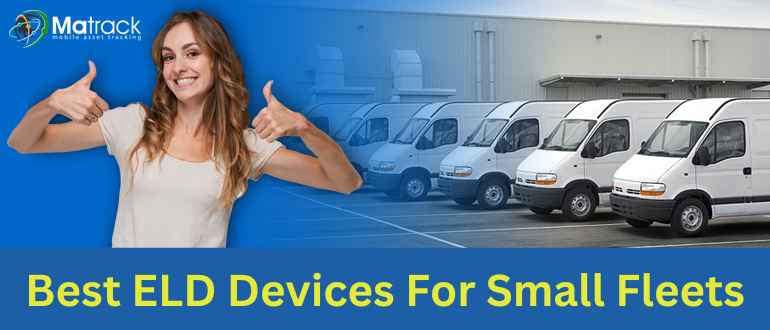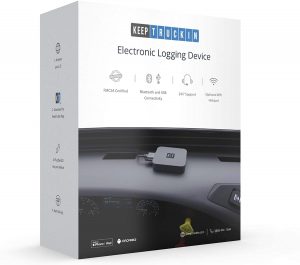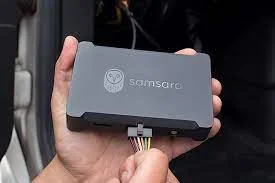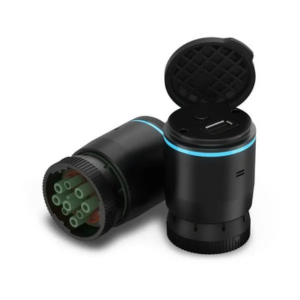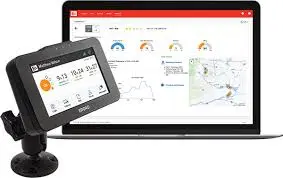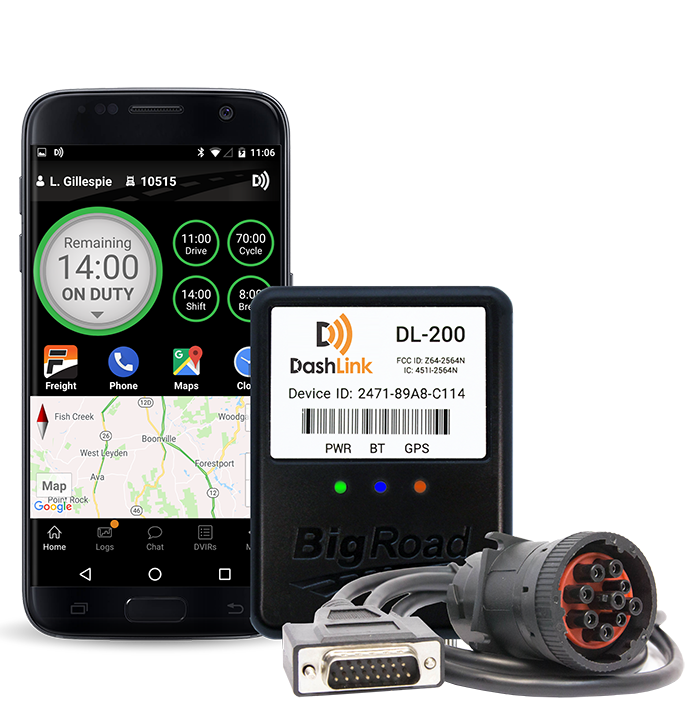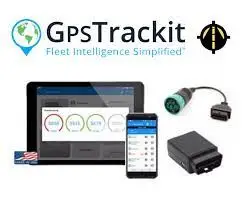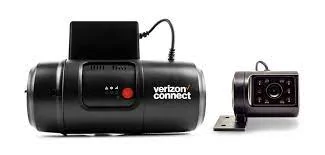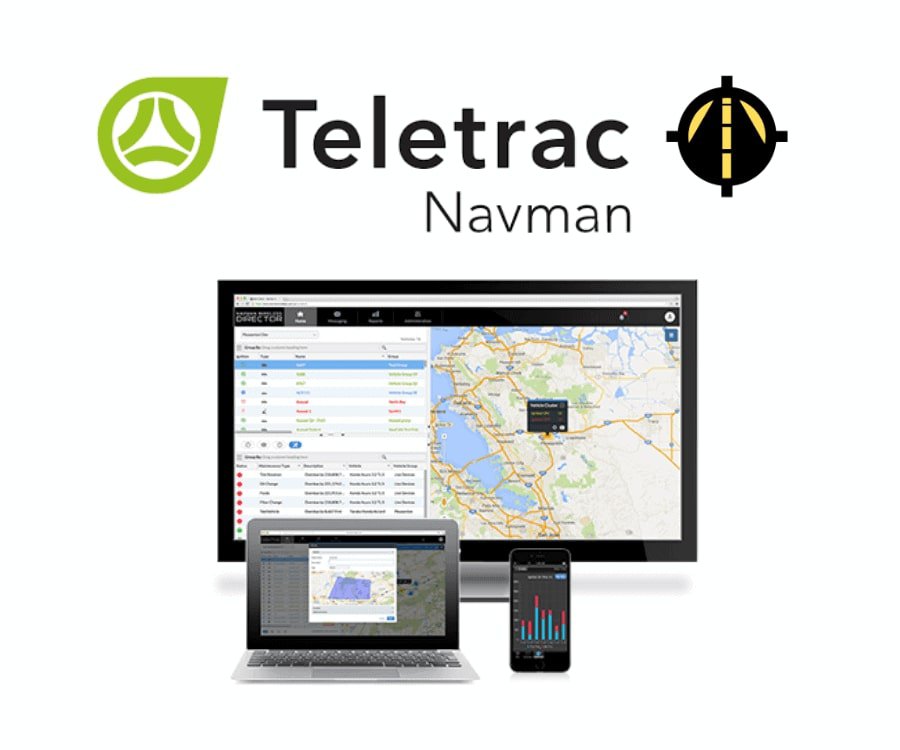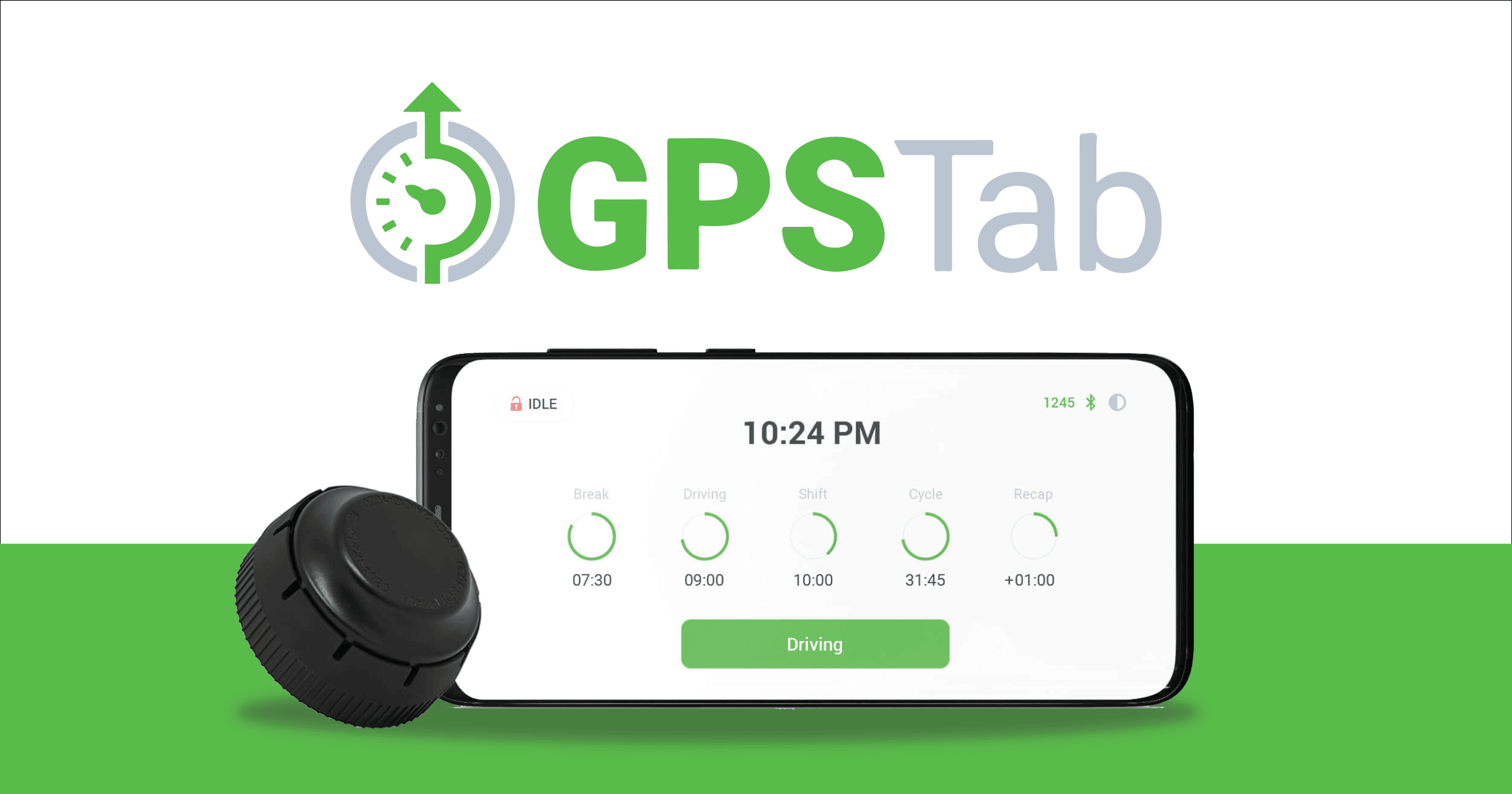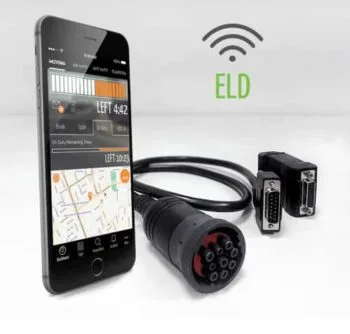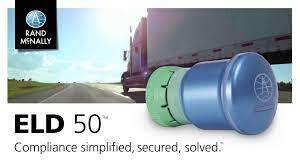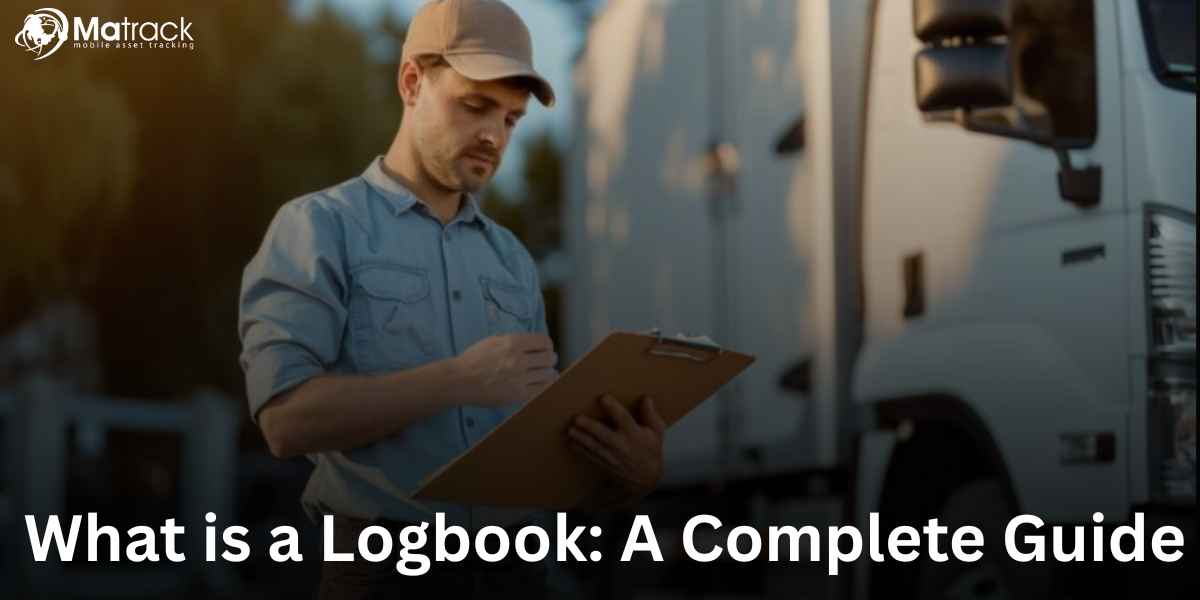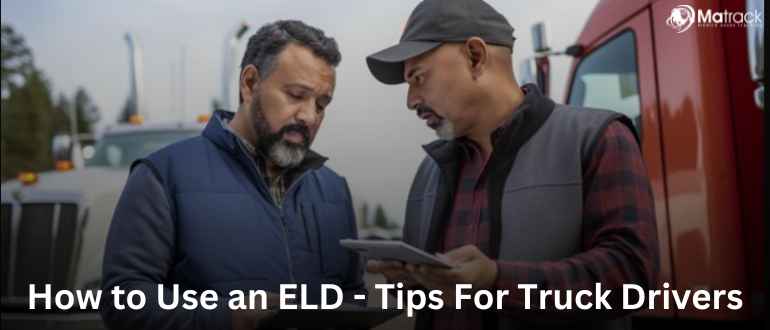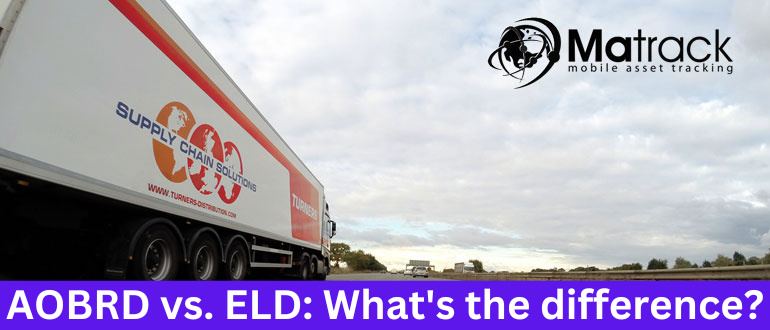The best ELD devices for small fleets are Matrack ELD, GoMotive ELD, and Samsara ELD. This is based on our testing team.
Small fleet o5erators need Electronic Logging Devices (ELDs) that are affordable, easy to use, and compliant with FMCSA regulations. The ideal ELD helps small fleets manage driving hours. It also controls fueling and maintenance costs. This makes operations more efficient.
With the considerable expansion of the ELD market, the question remains about the best ELD for the small fleet driver. This guide shows the best ELD devices for small fleets in 2025. It focuses on practical solutions with essential features. These devices are simple to use, ensuring effective, legal, and cost-efficient fleet operation.
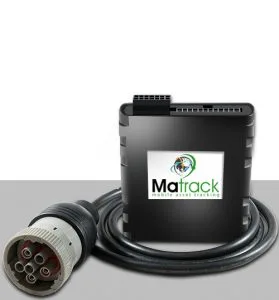
Matrack: Best Overall ELD Device For Small Fleet
Matrack ELD combines ease of use with important compliance features, making it the top choice for small fleets needing reliable tracking and affordability.
- Offers customizable alerts for fleet-specific compliance needs.
- Supports mileage tracking for tax reporting and route optimization.
- Includes a driver scoring feature to monitor and improve driver performance.
- Provides access to reports via both desktop and mobile, allowing for flexible fleet management.
Our Top Choices For Best Small Fleet ELDs In 2025
- Cost: $19.95/month
- Best For: Small fleets needing affordable, easy compliance
- Core Features: FMCSA-compliant, real-time tracking, no contract
- Installation: Plug-and-play
- Cost: $40/month
- Best For: Small fleets needing cross-border compliance
- Core Features: Cross-border compliance, driver behavior insights
- Installation: Requires mobile device
- Cost: $99 + $27/month
- Best For: Small fleets needing full fleet management
- Core Features: HOS tracking, vehicle diagnostics, cloud-based
- Installation: Plug-and-play
- Cost: $249.95
- Best For: Low-maintenance, no-fee compliance
- Core Features: Fuel tracking, no subscription fees, compact
- Installation: Plug-and-play
- Cost: $25/month
- Best For: Rugged environments with simple compliance
- Core Features: Smart Short Haul, rugged, cloud-based reporting
- Installation: Plug-and-play
- Cost: $19.50/month
- Best For: Affordable, no upfront cost compliance
- Core Features: No upfront cost, GPS, traffic updates
- Installation: Plug-and-play
- Cost: $34.99/month
- Best For: Flexible, no-contract compliance
- Core Features: Real-time tracking, maintenance checklists
- Installation: Plug-and-play
- Cost: $20/month
- Best For: Comprehensive fleet management and tracking
- Core Features: HOS tracking, geofencing, asset tracking
- Installation: Integration with Verizon platform
- Cost: $35/month
- Best For: Simple, efficient compliance and tracking
- Core Features: Real-time HOS, driver behavior insights
- Installation: Cloud-based
- Cost: $100 + $20–$25/month
- Best For: Budget-friendly, mobile-based compliance
- Core Features: No hardware costs, real-time tracking, IFTA
- Installation: Cloud-based app
- Cost: $250 (one-time)
- Best For: Affordable compliance with basic tracking
- Core Features: Plug-and-play, real-time alerts, mobile app
- Installation: Plug-and-play
- Cost: $75 (one-time)
- Best For: Simple compliance in low connectivity areas
- Core Features: HOS tracking, engine diagnostics, no fees
- Installation: Plug-and-play
Things to Consider
FMCSA Compliance
FMCSA Compliance is important for small fleet ELDs. It ensures your device meets all regulations and avoids fines and issues during inspections.
User-Friendliness
An ELD for a small fleet should be easy for drivers to use. A simple system reduces errors and helps drivers stay on track with minimal effort.
Affordable Pricing
For small fleets, cost matters. Choose an ELD that fits your budget while covering all necessary compliance and tracking features.
Vehicle Compatibility
Check compatibility with your small fleet to ensure the ELD works with your fleet’s vehicles and avoid future issues.
Data Accuracy
Accurate tracking is crucial. The small fleet ELD should log hours and vehicle status reliably. This helps ensure compliance and avoid fines.
Responsive Support
Look for small fleet ELDs with reliable customer support. Quick assistance is essential if technical issues arise.
Simple Installation
Choose an easy-to-install ELD for a small fleet. A straightforward setup saves time and reduces downtime.
Future Growth
Pick an ELD that can scale as your fleet grows. The system should adapt to new vehicles or regulations without a complete upgrade.
How We Tested ELD Devices For Small Fleets
We tested ELD devices for small fleets. We focused on how easy they are to install and use. We also looked at important features like Hours of Service (HOS) tracking, real-time GPS, and maintenance alerts.
We checked each device for affordability, subscription options, and compatibility with FMCSA rules. This ensured it met the needs of small fleet operators who want simple and effective compliance solutions.
12 Best ELD Devices For Small Fleets In 2025
Matrack ELD
Matrack ELD is a simple, cost-effective solution for small fleets to stay compliant with FMCSA regulations. It offers a plug-and-play setup that installs in minutes, making it easy for drivers to start logging hours right away. The device automatically tracks hours of service, mileage, and location. The fleet manager dashboard provides real-time monitoring and reporting for compliance.
The Matrack ELD device is ideal for small fleets that need a no-contract solution starting at just $19.95 per month. It offers features like automatic violation alerts, real-time tracking, and DOT inspection mode for easy compliance checks.
Product Highlights
- FMCSA-compliant
- Automatic HOS tracking
- DOT inspection mode
- Real-time fleet tracking
- Easy, quick installation
Pros and Cons
| Pros | Cons |
|---|---|
| ✅ Easy installation | ❌ Limited advanced features |
| ✅ No contract, month-to-month | ❌ Basic customer support options |
| ✅ Lifetime warranty | |
| ✅ Real-time tracking | |
| ✅ Automatic violation alerts |
GoMotive ELD
GoMotive ELD is designed for small fleets to automate compliance tasks and reduce HOS violations. The device syncs with the Motive Driver App, allowing drivers to log their hours and receive real-time alerts. Fleet managers can monitor compliance through a simple dashboard and get insights into driver behavior and fleet performance.
This device fully certifies compliance with U.S. and Canadian regulations, ensuring that small fleets stay compliant across borders. The solution is user-friendly, making it easy to manage HOS logs and violations with minimal effort.
Product Highlights
- FMCSA and Transport Canada certified
- Real-time alerts and violation management
- Driver app for easy logging
- Fleet monitoring dashboard
Pros and Cons
| Pros | Cons |
|---|---|
| ✅ Easy to use | ❌ Requires a mobile device for full functionality |
| ✅ Supports both U.S. and Canada | ❌ Monthly subscription costs |
| ✅ Proactive violation alerts | |
| ✅ Fleet tracking and insights |
Samsara ELD
Samsara ELD offers a complete solution for small fleets looking to streamline compliance and fleet management. With simple installation and integration, it automatically tracks HOS, vehicle diagnostics, and real-time location. The device also helps manage maintenance schedules, giving fleet managers more control over operations.
Small fleets benefit from the cloud-based system. It allows easy access to compliance reports and maintenance logs from any location. Samsara is an ideal choice for fleets needing both compliance and efficient fleet management in one device.
Product Highlights
- HOS tracking and vehicle diagnostics
- Cloud-based fleet management
- Easy-to-use dashboard
- Seamless integration with fleet systems
Pros and Cons
| Pros | Cons |
|---|---|
| ✅ Plug-and-play installation | ❌ Higher price point |
| ✅ Real-time vehicle diagnostics | ❌ Requires additional subscription for advanced features |
| ✅ Cloud-based reporting | |
| ✅ Easy fleet management |
Garmin eLog
Garmin eLog provides a straightforward and affordable ELD solution for small fleets. The device is compact and plugs directly into the vehicle’s diagnostic port, offering simple, FMCSA-compliant HOS tracking. It includes features like fuel tracking via IFTA, allowing fleets to stay compliant without ongoing costs.
The Garmin eLog is ideal for small fleets that need an efficient, low-maintenance ELD without hidden fees. You can connect it to a mobile app for easy log access, and you can use it for roadside inspections via USB or Bluetooth.
Product Highlights
- FMCSA-compliant
- No ongoing subscription fees
- Fuel tracking via IFTA
- Compact and easy to install
Pros and Cons
| Pros | Cons |
|---|---|
| ✅ No ongoing costs | ❌ Limited features compared to more advanced systems |
| ✅ Simple setup and use | ❌ No support for OBD II ports |
| ✅ Fuel tracking support | |
| ✅ Compact and portable |
EROAD Ehubo ELD
EROAD Ehubo ELD is a reliable solution for small fleets looking for easy-to-use compliance tracking. The device tracks HOS, fuel tax compliance, and vehicle performance in real time. Its strong design makes it perfect for fleets working in tough conditions. The “Smart Short Haul” function makes short-haul exemptions easier.
EROAD’s cloud-based platform helps fleet managers access logs, reports, and track vehicle status easily. This reduces the need for manual paperwork and improves fleet efficiency.
Product Highlights
- Short-haul exemption tracking
- Cloud-based platform
- Fuel and safety tracking
- Simple installation
Pros and Cons
| Pros | Cons |
|---|---|
| ✅ Smart Short Haul feature | ❌ Not as feature-rich as other solutions |
| ✅ Real-time compliance tracking | ❌ Customer support limited to business hours |
| ✅ Durable for tough conditions | |
| ✅ Cloud-based reporting |
BigRoad Dashlink ELD
BigRoad Dashlink ELD is an affordable option for small fleets. It helps them meet compliance requirements easily.
The device tracks driving hours and vehicle status. It also offers features like fuel tracking, real-time GPS, and traffic updates. It pairs with the BigRoad app for easy log management.
BigRoad Dashlink is perfect for fleets that need a simple, reliable ELD without additional complexities. The device has no upfront cost and is easy to install. It gives fleet managers the tools they need to stay compliant and efficient.
Product Highlights
- Simple setup and installation
- Real-time GPS and traffic updates
- Fuel tracking
- Low cost
Pros and Cons
| Pros | Cons |
|---|---|
| ✅ No upfront cost | ❌ Limited advanced features |
| ✅ Easy installation | ❌ Relies on Bluetooth for full functionality |
| ✅ Fuel tracking and GPS | |
| ✅ Real-time traffic updates |
GPSTrackit ELD
GPSTrackit ELD offers small fleets an easy-to-install, plug-and-play solution for compliance. The device tracks HOS, vehicle location, and mileage, providing real-time monitoring and alerts. It also includes maintenance checklists to help drivers perform required inspections.
GPSTrackit offers no contract and flexible monthly payments. A great choice for small fleets exists. This system is simple and affordable. It also meets all compliance needs.
Product Highlights
- FMCSA-compliant
- Real-time vehicle tracking
- No contract, flexible payments
- Maintenance checklists
Pros and Cons
| Pros | Cons |
|---|---|
| ✅ No contracts | ❌ Limited advanced features |
| ✅ Easy installation | ❌ Requires a mobile app for full functionality |
| ✅ Maintenance checklists | |
| ✅ Real-time tracking |
Verizon Connect Reveal ELD
Verizon Connect Reveal ELD offers a comprehensive fleet management solution for small fleets. It provides HOS tracking, real-time vehicle tracking, and violation alerts. The device integrates with Verizon Connect’s platform, allowing for fleet-wide visibility and operational insights.
Verizon Connect is great for small fleets that want more than just compliance. It provides tools like geofencing and asset tracking. These tools help small fleet managers improve their overall fleet efficiency.
Product Highlights
- HOS tracking and real-time alerts
- Fleet-wide visibility
- Geofencing and asset tracking
- Comprehensive fleet management
Pros and Cons
| Pros | Cons |
|---|---|
| ✅ Integrated with fleet management tools | ❌ More expensive than other options |
| ✅ Geofencing and asset tracking | ❌ Requires full integration with Verizon Connect platform |
| ✅ Real-time alerts and tracking |
Teletrac Navman ELD
Teletrac Navman ELD is a reliable solution for small fleets looking to meet compliance requirements and improve fleet performance. The device offers real-time tracking, HOS management, and driver behavior insights. Fleet managers can access detailed reports on a cloud-based platform. This makes it easy to monitor compliance and fleet efficiency.
Teletrac Navman is great for small fleets. It offers a simple and effective way to manage driver logs, vehicle performance, and violations in real-time.
Product Highlights
- Real-time HOS and fleet tracking
- Cloud-based reporting
- Driver behavior insights
- Simple and intuitive dashboard
Pros and Cons
| Pros | Cons |
|---|---|
| ✅ Real-time tracking | ❌ Pricing can vary based on fleet size |
| ✅ Cloud-based platform | ❌ More advanced features require additional subscriptions |
| ✅ Easy-to-use dashboard | |
| ✅ Driver behavior insights |
GPSTab
GPSTab offers a cloud-based, budget-friendly solution for small fleets to meet ELD requirements. It eliminates the need for expensive hardware by allowing fleets to use existing mobile devices. GPSTab includes features like IFTA reporting, vehicle diagnostics, and geofencing.
The system is simple to use. It gives fleet managers real-time data on vehicle performance and driver behavior. This makes it a great choice for small fleets that need a cost-effective compliance solution.
Product Highlights
- Cloud-based app
- No hardware costs
- IFTA reporting and geofencing
- Real-time vehicle tracking
Pros and Cons
| Pros | Cons |
|---|---|
| ✅ No hardware required | ❌ Requires mobile devices |
| ✅ Affordable and flexible pricing | ❌ Limited advanced features |
| ✅ Real-time reporting and diagnostics |
Gorilla Safety ELD
Gorilla Safety ELD provides small fleets with a simple, affordable ELD solution to ensure HOS compliance. The device offers easy plug-and-play installation and integrates with a mobile app for seamless log management. It also includes real-time alerts to help drivers avoid violations during their shifts.
Gorilla Safety ELD is great for small fleets. It reduces paperwork and helps manage compliance. This makes it easier to keep accurate records and pass roadside inspections.
Product Highlights
- Simple plug-and-play installation
- Real-time alerts and compliance tracking
- FMCSA-compliant
- Low-cost solution
Pros and Cons
| Pros | Cons |
|---|---|
| ✅ Easy installation | ❌ Limited features |
| ✅ Real-time alerts | ❌ Basic reporting options |
| ✅ Affordable | |
| ✅ FMCSA-compliant |
Rand McNally ELD
Rand McNally ELD is a compact, easy-to-install device ideal for small fleets needing HOS compliance. It tracks driving time and generates electronic logs that users can access via a mobile app. The device offers features like engine diagnostics, which help with vehicle maintenance planning.
Well-suited for small fleets that need a reliable and easy ELD solution, Rand McNally ELD keeps you compliant. It stores data for up to two days, even in areas with low connectivity.
Product Highlights
- Simple plug-and-play setup
- HOS tracking and engine diagnostics
- Data storage for up to 2 days
- No subscription fees for basic features
Pros and Cons
| Pros | Cons |
|---|---|
| ✅ Compact design | ❌ Limited advanced features |
| ✅ Easy installation | ❌ Data storage for only 2 days |
| ✅ Vehicle diagnostics | |
| ✅ Reliable in low connectivity areas |
Benefits of ELD Devices For Small Fleets
Increased productivity
Increased productivity is one of the advantages of the ELDs for small fleets. Automated log entries reduce the number of documents to fill out. This allows drivers to spend more time driving their routes.
Fleet managers also have less manual work to do. This helps improve daily operations.
Real-Time Monitoring
Real-time monitoring offers small fleet managers to track vehicle locations, speed, and status accurately. This helps make quick route changes. It also gives better control over fleet activities. This ensures everything runs as efficiently as possible.
Data-Driven Insights
Data-driven insights from ELDs help fleet managers understand their drivers’ habits. They can also assess vehicle efficiency and fuel use in their fleet. Small fleets can use this information to make better decisions, plan routes, and optimize fuel use.
Reduced Risk of Legal Issues
Implementing ELDs minimizes the chances of getting into legal problems. One main advantage of ELDs is that they automatically record driving time and other vehicle activities. This makes it easy to keep accurate logs and follow legal rules, helping to avoid any violations.
Improved Maintenance Tracking
Improved maintenance tracking is another advantage of ELDs. These devices can warn fleet managers about possible vehicle problems before they get serious. This helps avoid expensive repairs and keeps trucks running well.
Enhanced Driver Accountability
ELDs improve driver accountability by tracking hours of service and vehicle usage. Drivers know that someone monitors their actions, which encourages better compliance with regulations and responsible driving behavior.
Better Fuel Management
Better fuel management is possible with ELDs, which monitor driving habits and idle times. By identifying areas of inefficiency, fleet managers can optimize routes and reduce fuel costs, benefiting the bottom line.
Frequently Asked Questions
What are the main benefits of using an ELD for small fleets?
ELDs help meet FMCSA rules by tracking Hours of Service (HOS) automatically. They reduce paperwork and allow real-time monitoring of driver logs. Many ELDs for small fleets also include GPS tracking, maintenance reminders, and fuel tracking.
Which ELD devices offer no-contract or flexible subscription options?
Matrack ELD and GPSTrackit ELD offer month-to-month subscription plans. No long-term contracts exist. This gives small fleets flexibility and helps control costs.
Are there affordable ELD options with no ongoing subscription fees?
Garmin eLog and Rand McNally ELD provide essential compliance features without ongoing fees. They offer affordable solutions for small fleets.
What is the easiest ELD for small fleet operators to install and set up?
Plug-and-play devices like Matrack ELD and BigRoad Dashlink ELD connect easily to the vehicle’s diagnostic port. This lets drivers use them right away.
Which ELD devices are compatible with both U.S. and Canadian regulations?
GoMotive ELD is certified for U.S. FMCSA and Canadian transport rules. This makes it perfect for small fleets that operate across borders or expand to Canada.
Conclusion
Choosing the right ELD for a small fleet ensures compliance and smooth operations. Top options like Matrack, GoMotive, and Samsara are affordable and provide essential compliance tools without extra complexity. Plug-and-play setups like Matrack and BigRoad Dashlink are easy to install. Garmin eLog and Rand McNally provide no-fee options for fleets on a budget.
The best choice will be guided by each fleet’s needs—like cross-border compatibility or advanced tracking. With the right ELD, small fleets can efficiently manage hours, maintenance, and fuel costs for effective compliance and streamlined operations.



